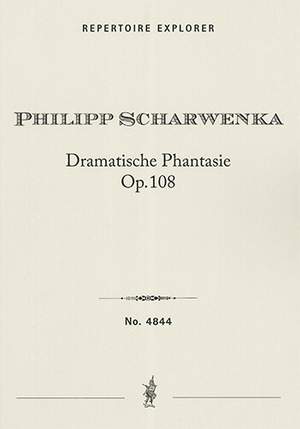Composer and pianist Philipp Scharwenka was born in Szamotuly, Grand Duchy of Posen, which was part of the kingdom of Prussia, created from territories annexed by Prussia after the petition of Poland. Scharwenka composed three symphonies, a violin concerto, some choral works, numerous sonatas, quartets, and chamber music, all of which were written for strings and piano. His works were performed by major conductors of his time like Arthur Nikisch, Anton Seidi, and Hans Richter. Scharwenka composed Dramatische Phantasie (Dramatic Fantasy for Orchestra) in 1900. The premiere date and location are unknown. Compared with his older works, the composer uses a very advanced harmonic language in this composition. While his earlier pieces were based on more simple melodies, Scharwenka now implies a different compositional direction. In comparison to his brother, Xaver Scharwenka (1850-1924), a more extrovert composer, Philipp uses more dreamlike and thoroughly moody inflections; for example, in Dramatische Phantasie we hear an impressionist musical language, which did not occur in his works before. He also presents more varied orchestration, an extended dynamic range, and many ideas based on contrast. The Phantasie sounds very much like a 19th century composition rooted in Romanticism, even though there is a turbulent mood and tormented melodies.
Dramatische Phantasie is divided into three fairly equal movements and is written for a large orchestra, which comprises the usual instruments with harp and English horn added. In the first movement, the lower voices (double basses, bassons, and tuba) carry the orchestra with long tones while the rest of the ensemble reflect their ideas in an evolving melody. Soloistic woodwinds are characteristic for the middle movement, starting with a solo by the clarinet, which is accompanied by the harp shortly afterward. A flute solo follows, supported by oboes and bassoons.The solo clarinet then reenters with a persuasive melody that strings and harp take over. The rest of the orchestra is included, a present low brass section is later taken by the oboe and accompanied by the strings. The flutes then join another clarinet solo to end the movement. The final movement is more reserved than the earlier two, giving the listener a sense of darkness and mystery, possible thanks to the use of the strings in the beginning. This movement is a simplified sonata form. The strings open the exposition followed by the development.

